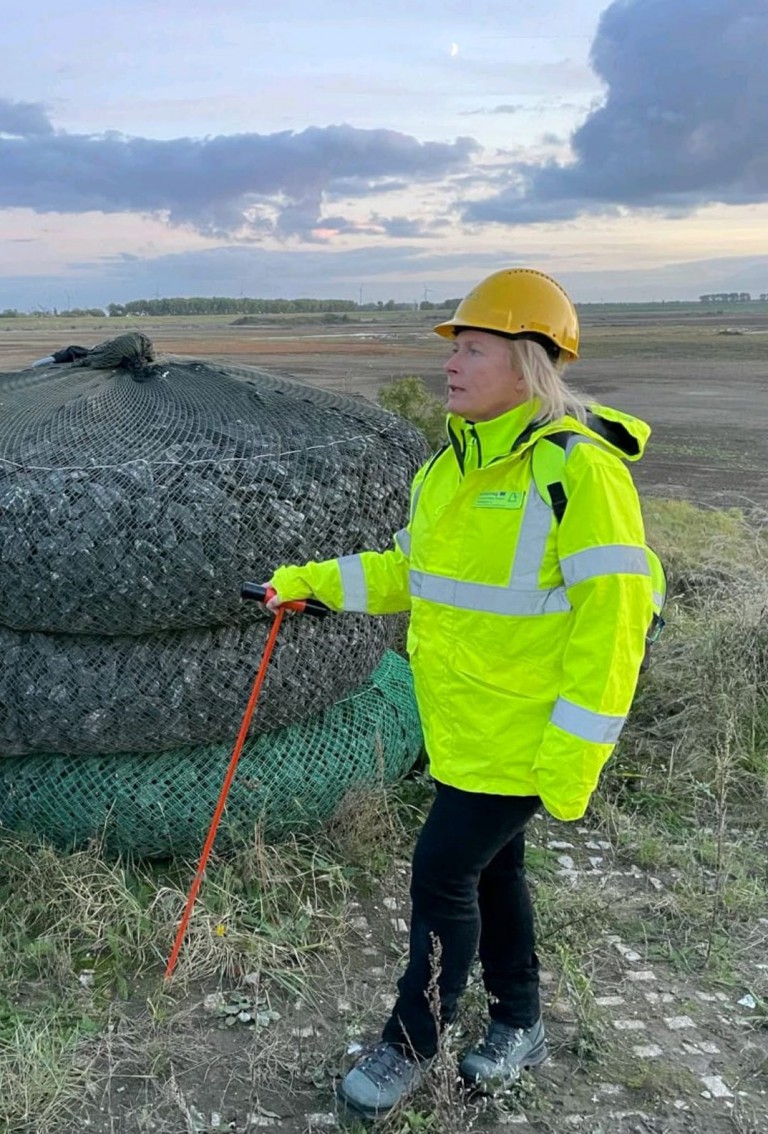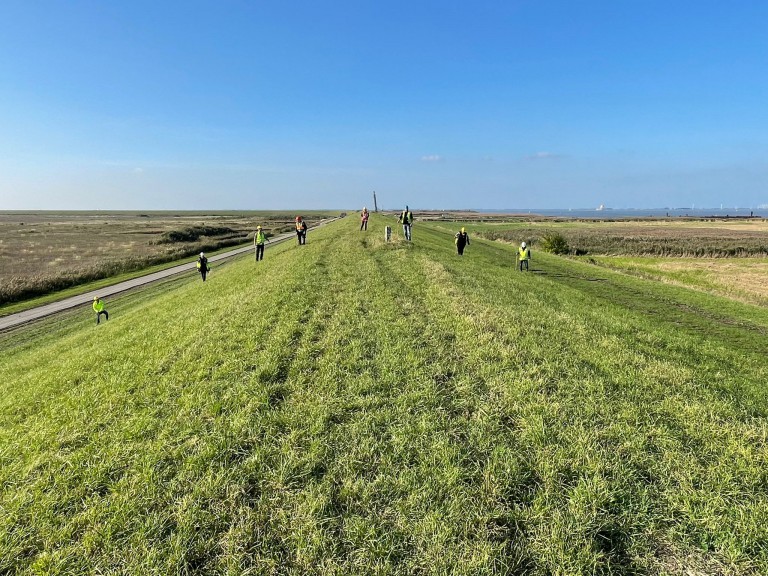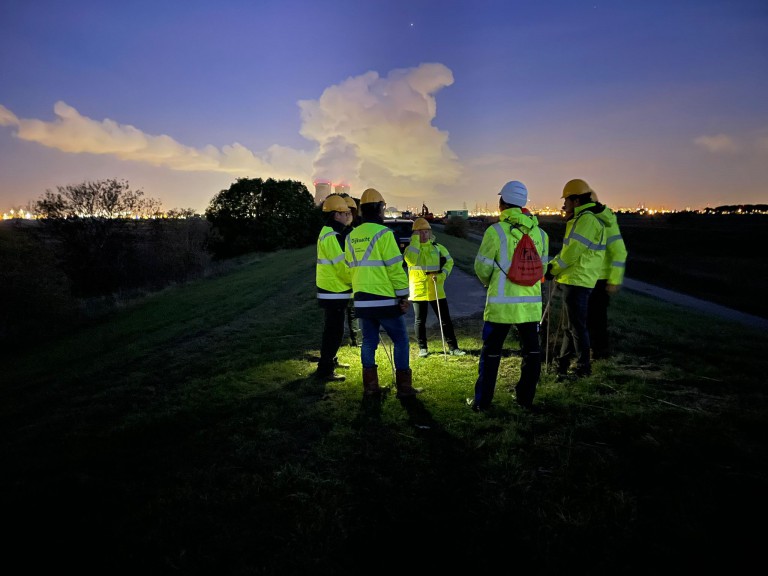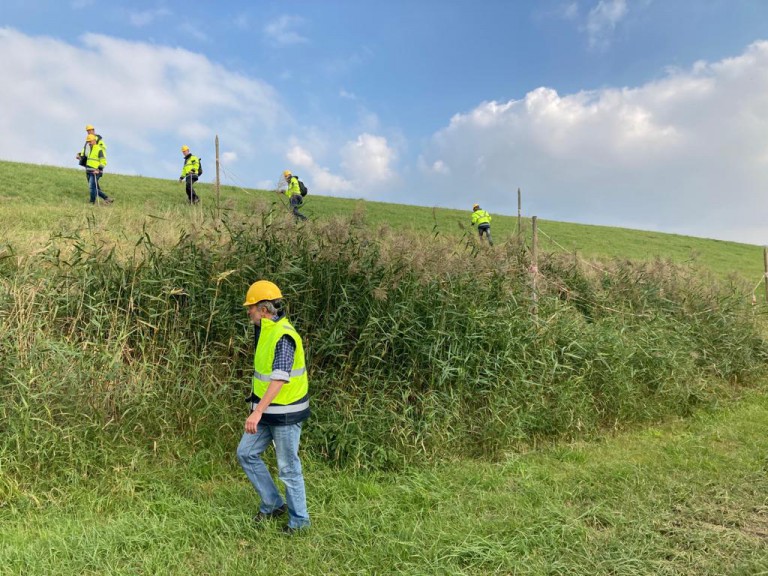Levee monitoring during special circumstances for a safe hinterland
- 25 November 2021
- Francien Horrevorts
- Emergency Response
How can you detect levee damage and what should you do? And how do you ensure that safety always comes first? Marian Booltink, Crisis Manager at STOWA, has given various levee monitoring training courses addressing these questions.
Levee monitoring training
As part of the international research project Polder2C’s, Marian started a series of levee monitoring training courses in the Living Lab Hedwige-Prosperpolder. This was not the first time, as Marian has been organising international training courses since the start of the project. This time for around eighty levee guards, flood defense experts and levee managers from all over the Netherlands. The training courses are aimed at levee protection and monitoring during special circumstances, such as high water caused by storms.
Levee monitoring
The purpose of levee monitoring is to monitor the condition of the levee and to prevent possible damage and repair if necessary, so that the levee remains safe. Monitoring consists of different phases; inspection, diagnosis, prognosis and implementation of measures. It can be carried out by many people, depending on the choices made by the flood defense organisation. For example, by levee guards from their own organisation, voluntary levee guards, citizens, experts and levee managers.

The components diagnosis, prognosis and implementation are performed by flood defense experts. Marian: “Because levee guards identify changes to the levees, the experts can take appropriate action if necessary. It is therefore important that they know what to look for. Hence the training. As long as we can carry out levee monitoring and know what is going on, we can act so that the levee remains safe.”
"The practical knowledge and insight you gain is useful for all colleagues. Such as the tip to use the prod as an instrument and to practice with App2C, the app for reporting levee damage."
Wim van Natyne, voluntary Levee Guard
The courses
Marian offered training to inspire organisations to continue to develop and professionalise levee monitoring. With regard to levee monitoring, the main subject was inspection. The eager participants practiced inspecting a levee, using a prod, and determining which findings are urgent or not. In addition, the safety of the levee guards was an important theme. For example, attention was brought to the fact that you always have to anticipate how to get everyone off a dangerous levee quickly, but safely. “Of course there are several ways to approach things. There is not one truth. We mainly wanted to inspire by having discussions, giving examples and exchanging knowledge.” says Marian.

App2C - Levee monitoring app
During the training, the levee monitoring app App2C was also briefly tested. This app is being developed as a product of the Polder2C’s project. The purpose of App2C is to easily report changes or damage to flood defences to the flood defence manager. As part of the report, photos can be included and a number of data, such as the type of damage, the location and the size of the damage. The notification then appears on the dashboard of the flood defence manager, who, based on the input, determines whether additional monitoring or emergency measures are required. Marian: “A practical tool. The levee guard becomes the eyes and ears for the levee manager. The international partners are also positive about App2C. The English partners are particularly interested in the use of the app by citizens who can report any damage that they notice via the app. However, the Belgian partners want experts to use the app. The app is suitable for both types of users.”
"It was a fun, educational day with experienced and less experienced guards from different organisations. Interesting to inspect levee damage that you don't see every day, such as fox burrows."
Peter Boone, Policy Officer at Water Board Vallei en Veluwe

Cross section of the levee
During the training, Marian was also able to make use of the studies that take place in the Living Lab. For example, she showed some repair measures and was able to explain techniques and the risks of animal burrowing. A cross-section of the levee was also visible. Marian: “That cross section really works as an eye opener. Levee guards see how vulnerable the levee is, it is a lot of sand with a clay layer and a grass cover. It becomes clear at a glance why it is so important that the cover is in good order.”
"I found it very valuable and very practical. I thought the tip of the day was to mow the levees well, so that burrows and holes in the levee become visible."
Franz Verheij, voluntary Levee Guard
Good series of training courses
Marian looks back on a good series of training courses: “Many people wanted to participate, from all over the Netherlands, and I even had to reject people to control the group size and quality. Due to corona, there were unfortunately no Belgian, French and English partners. There were a lot of participants from the Dutch water boards, however. What I love to see is the passion of everyone involved. They know very well why they are doing it, what the need is and also why it has to be done correctly.” Were there any setbacks? “The weather was beautiful and sunny every day! That made it very pleasant to be outside, but of course you also want to practice in rain and with poor visibility. So there is always something left to train.” Marian concludes.

What’s next?
In December some extra training courses will be offered and App2C will be explained in a webinar. The first integral exercises will be organised at the beginning of 2022. The whole series of inspection, diagnosis, prognosis and implementation of emergency measures is then discussed. Marian hopes this can be done in the company of all four participating countries and French, Belgian and English partners from the Polder2C's project can also participate. The role of App2C will be further expanded in the training and practicing prioritising and emergency measures will be part of it.
